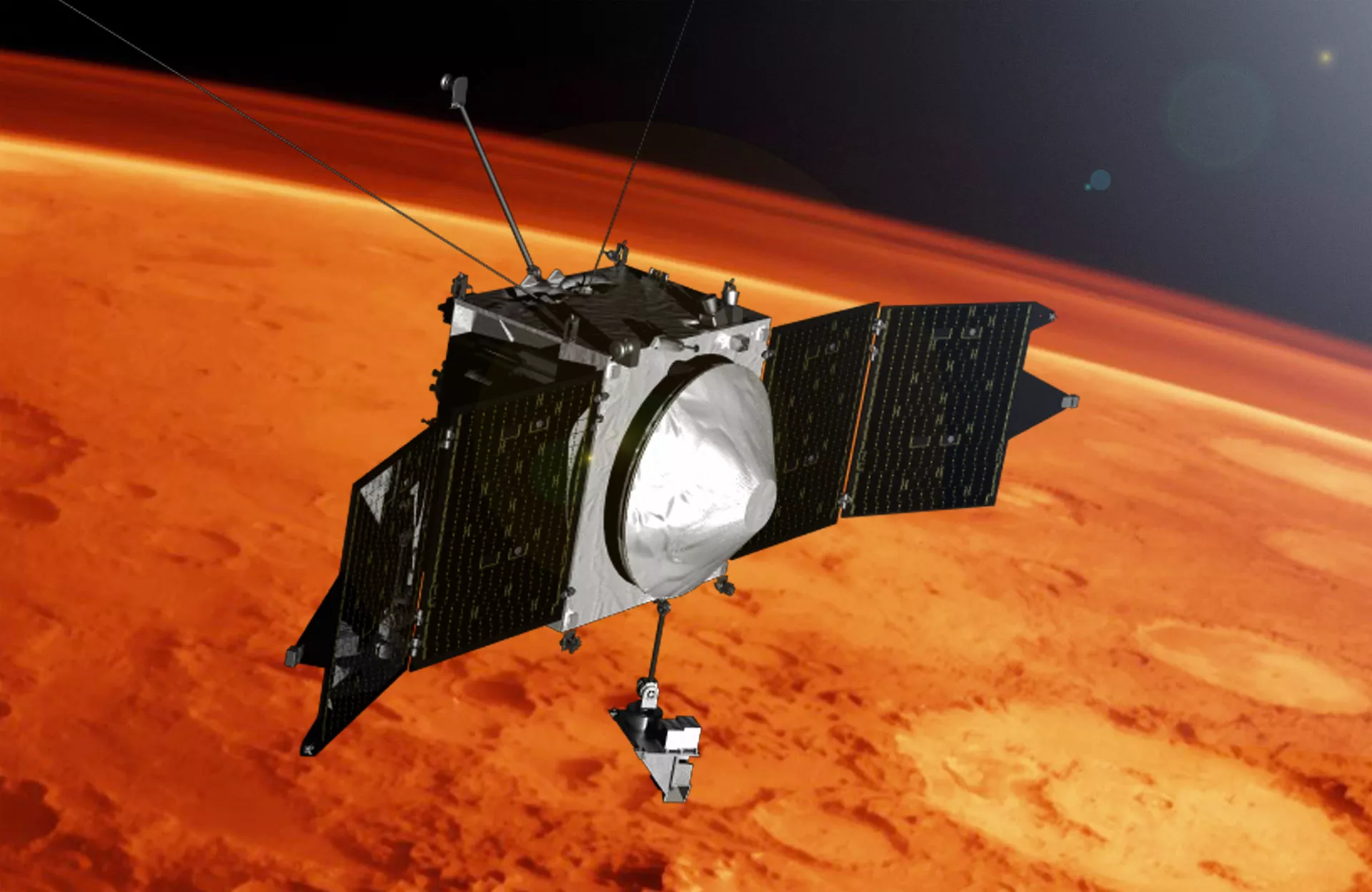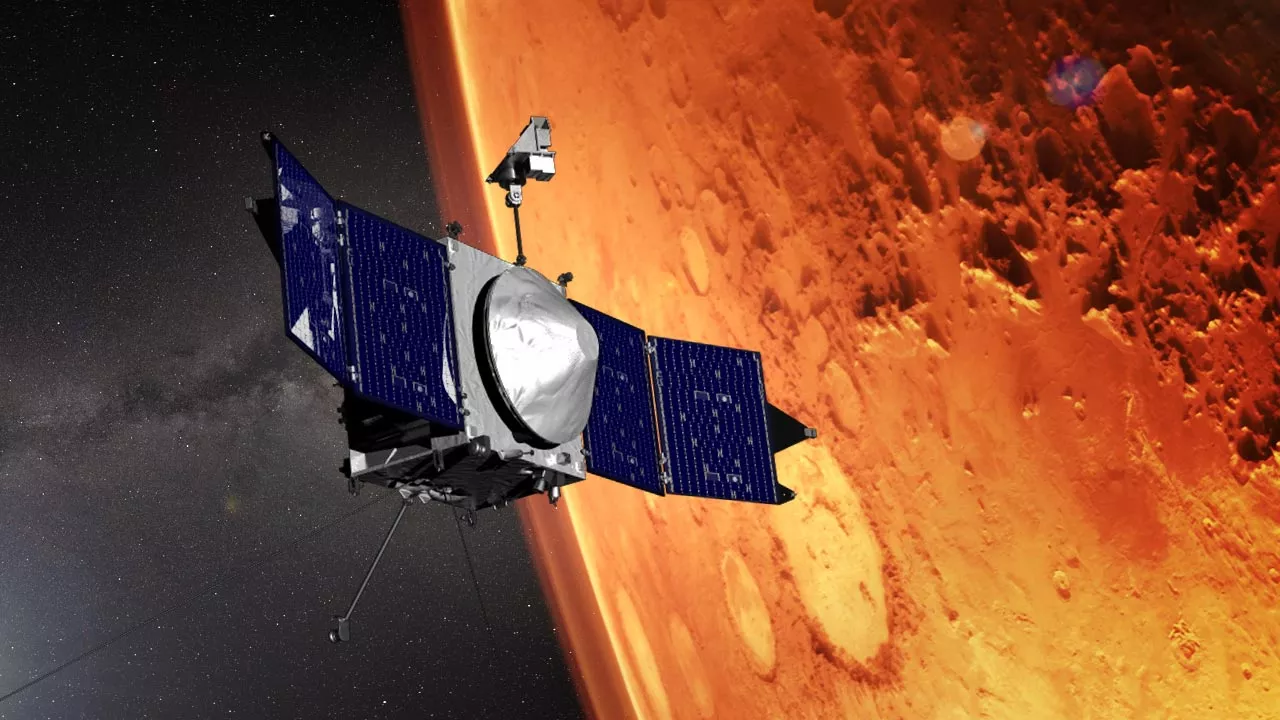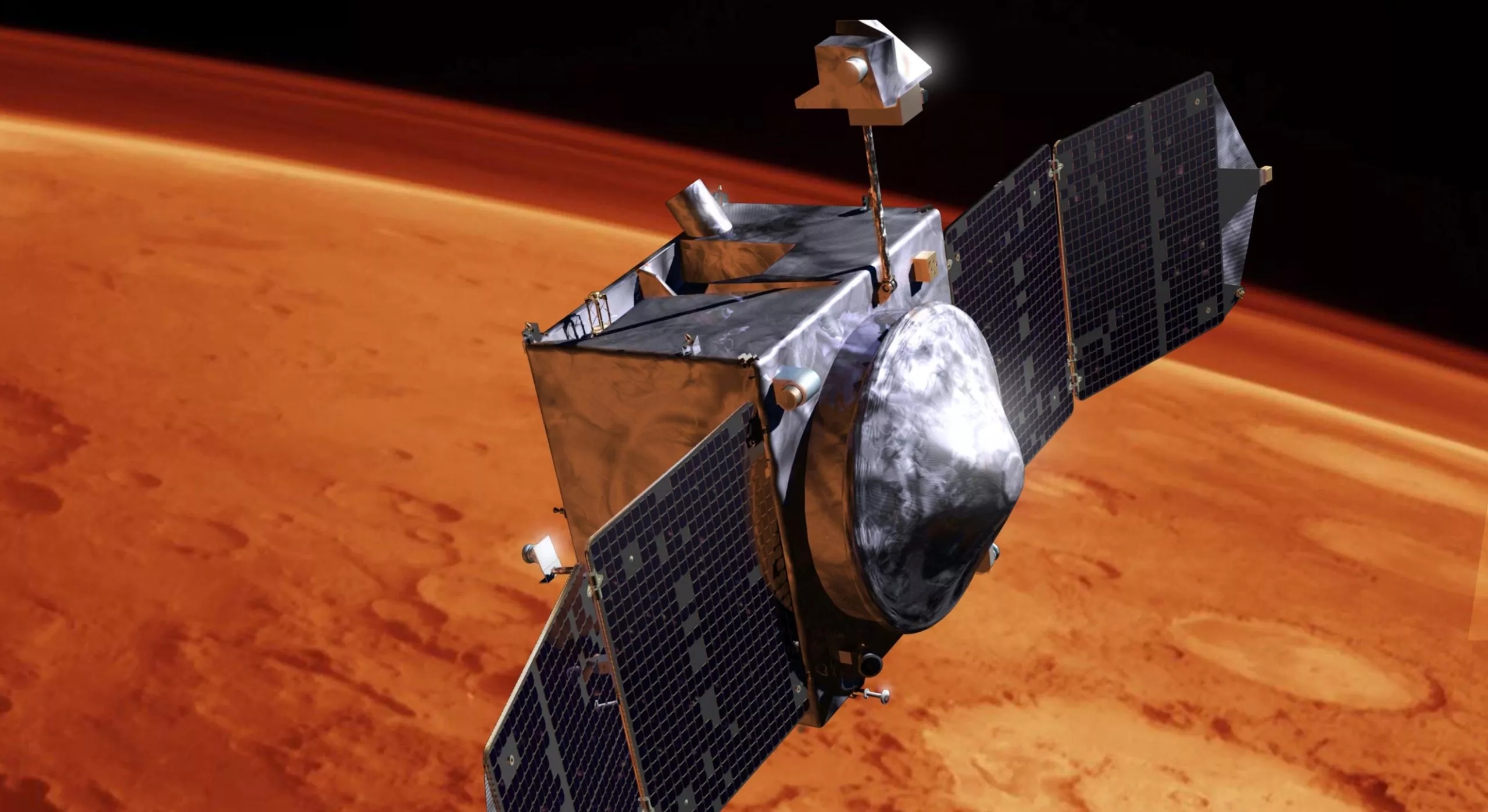NASA's Mars atmosphere and Volatile Evolution (Maven) mission resumed normal science and relay operations on may28,2022 after recovering from a long-term safe mode event. The spacecraft encountered problems with its inertial measurement unit (IMU) in February. The mission team successfully diagnosed the problems of these navigation instruments and developed a star navigation system for the spacecraft, which should allow the Maven mission to continue to operate into the next decade.

Shannon curry, lead researcher of Maven from the University of California, Berkeley, said: "this is a key challenge for the mission, but due to the work of our spacecraft and operation team, Maven will continue to produce important science and operate as a relay station for ground assets until the end of the decade. I am very proud of our team."
Maven was launched in november2013 and entered orbit around Mars in september2014. The mission aims to explore the planet's upper atmosphere, ionosphere and interaction with the sun and solar wind, so as to help scientists explore the loss of Mars' atmosphere in space. Understanding the loss of the atmosphere allows scientists to gain insight into the history of Mars' atmosphere and climate, liquid water, and the habitability of planets. Maven's main task is one year. Since then, it has far exceeded this deadline and has recently been approved for a fifth extension of its mandate.

Safe mode events
On Tuesday, February 22, 2022, the team lost contact with the spacecraft after performing a routine scheduled power cycle on the imu-1. IMU is used to measure the rotation speed of spacecraft to determine its attitude in space. There are two identical Imus on Maven. Imu-1 is the primary unit and imu-2 is the backup unit. Once the contact with the spacecraft is restored, engineering telemetry shows that the spacecraft cannot determine its attitude through any IMU. In response, the spacecraft made a computer restart, but its direction could not be determined. As a last resort, the spacecraft switched to the backup computer, which enabled Maven to obtain accurate readings from the imu-2. The spacecraft entered "safe mode" and stopped all planned activities, including scientific and relay operations, and waited for further instructions from the ground.
The team has been working hard to develop the all star mode - a star navigation system without IMU, which will be implemented in October 2022, because there were anomalies before imu-1 and the life of imu-2 is nearing the end. Developing and switching to all satellite mode is a standard practice when Imus on aging orbiters degrade.
Michael haggard, head of Maven spacecraft team of Lockheed Martin in Littleton, Colorado, pointed out: "this was a situation that no one expected at first, but the spacecraft carried out according to the design. When we finished on the backup computer, the spacecraft had tried to repair the problem of imu-1 for about 78 minutes. We ended on imu-2 at last, and there was a lot of pressure, so we should prepare the all star mode as soon as possible."

Race against time
In the coming months, Lockheed Martin's spacecraft team worked hard to accelerate software development to enable all star mode, because the predicted life of imu-2 would not last until October. April 19 - five months ahead of schedule, the spacecraft team completed the development and uploaded the software patch to Maven. Once the code goes up, imu-2 is shut down, which reserves its remaining life for future spacecraft requirements. After the uplink, the team conducted a series of tests to verify the function of the all star mode, and the code has not been tested in flight before.
Rich burns, Maven program manager at NASA Goddard Space Flight Center in Greenbelt, Maryland, said: "the team really strengthened the threat to survival. When we realized that imu-2 was degrading in the fall, we knew that we would have to shorten the schedule of all star mode. The spacecraft team accepted the challenge and worked under great pressure after abnormal conditions."
Once the all star mode is chained, the spacecraft and the scientific team power up the instrument and configure it for scientific operations. All the instruments were healthy and successfully restored the observation; However, until the all star mode test is completed, the spacecraft is limited to pointing to the earth, so the direction of the instruments is not as they usually are during scientific operations. However, some limited science is still possible. Maven even observed the coronal mass ejection impact on Mars less than two days after the instrument was powered on.

Advance towards science and relay
Maven returned to nominal science and relay operations on Saturday, May 28, 2022, after successfully transitioning to full star navigation.
Maven spacecraft continues to operate successfully in all star mode. Usually, IMU must be used at a certain time every year, so the team will need to continue to find innovative ways to control the direction of the spacecraft. This will ensure that Maven will be able to maintain operation during its extended mission period, so that the orbiter can continue to observe under the most extreme conditions in the Martian atmosphere encountered by the mission so far.
Maven's main researchers are at the University of California, Berkeley, while NASA's Goddard Space Flight Center in Greenbelt, Maryland, manages Maven's mission. Lockheed Martin Space Company built the spacecraft and was responsible for mission operations. NASA's Jet Propulsion Laboratory in Pasadena, California, provides navigation and deep space network support. The atmospheric and space physics laboratory at the University of Colorado at Boulder manages scientific operations and public outreach and communication.